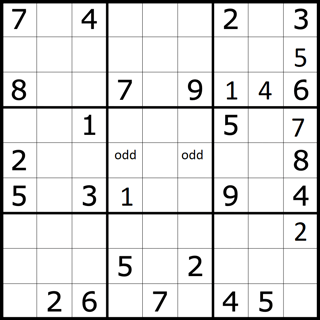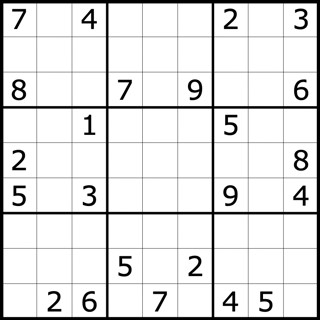Final solution

Step by step deduction
First look at the right middle box, since that's got four cells filled already including two odd in a column and two even in a column.
If that's an even-line box, then the one between $5$ and $9$ must be even; it can't be $2,4,8$, so it must be $6$. But now the only even thing left to place is $2$; there must be an even number in the middle column and there must be one in the top row, so there's only one place $2$ can be, but then we don't have an even line in this box. Contradiction.
So it's an odd-line box, which means the one above $8$ and $4$ must be odd; it can't be $1,3,5,9$ so it must be $7$.
Also, from normal Sudoku rules,
the $5$ in the top right box must be on the right-hand side. Now that whole rightmost column is filled except for $1,2,9$ in the bottom three, of which $2$ must be on top.
Going back to the top right box, its bottom left cell can't be $2,3,4,5,6,7,8,9$, so it must be $1$, then the one to the right of that must be $4$.
Now look at the left middle box, which also has four cells filled already.
The empty cell on the right-hand side can't be $2,4,6,8$, so it must be odd and this is an odd-line box. In fact, the $8$ in this box must be in the middle column, which means the $8$ in the bottom left box is in the right column, while the $4$ can't be in the right column or bottom row. So the bottom left box is also an odd-line box. The corresponding cell in the centre box can't be $3,5,7,9$, so it must be $1$.

The $1$ in the right-middle box can now be filled by normal Sudoku deduction.
Important realisation:
if a box has an even line in it, it must be one of the diagonals. (Assume it's a row or column; then each one of the other two parallel rows/columns must contain at least one even number, making five even numbers in total, contradiction.)
In particular, this means the top middle box is
an odd-line box. Looking in the centre box now, the top-middle and left-middle cells are both odd and can't be $1,5,7$, so they must be $3$ and $9$ in some order. Now the top-left, top-right, and bottom-middle cells can't be $5$ or $7$, so they must be even. That means the top left box, top right box, and bottom middle box are all even-line boxes and therefore have all-even diagonals. We can fill in lots of stuff immediately there:

Thanks to @shoover's observation that the central box is a key to itself,
it must be an odd-line box, since there's not enough evens left to make an even diagonal. So the bottom right one must be an even-line box, which means its central cell must be even, therefore $6$. That means the $6$ in the right middle box is on the left, and now we can fill in lots more stuff with pure Sudoku logic:

Now we're almost done.
Top left box: only one place for $9$, then only one place for $1$, then the rest is easy.
Second column: placing $5$ and $9$ helps us to finish off the bottom right box.
Remember that the bottom middle box has an even diagonal, and the rest can all be done by pure Sudoku logic.





